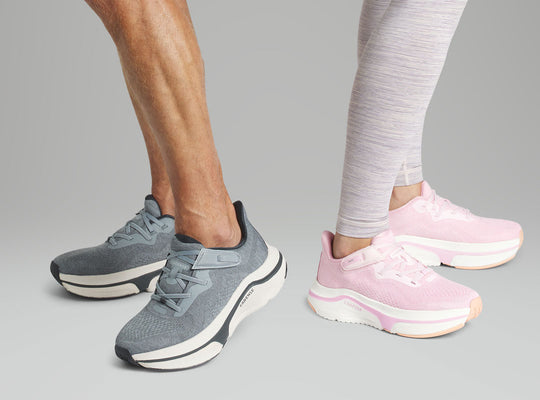-
Strokes in Parkinson’s Disease Patients: Prevalence
-
h1-strokes-in-parkinsons-disease-patients-prevalence-treatments-and-more
-
Is the Prevalence of Stroke in Parkinson’s Patients High?
-
Causes of Parkinson’s Disease vs
-
Understanding Parkinson’s Disease
-
Understanding Stroke Types
-
Challenges Facing Parkinson’s Disease Patients in Identifying Stroke Risk
-
Treatments and Interventions for Stroke Prevention
-
Recovery Timetable
-
Can a Stroke Lead to Parkinson’s Disease?
-
Can Adaptive Shoes Speed Up Recovery Process
Strokes in Parkinson’s Disease Patients: Prevalence, Treatments and More
Parkinson’s disease (PD) patients have a higher risk of stroke than the general population. In this post, we will explain what you need to know about the increased prevalence of stroke in patients with PD.
We will also go over types of strokes in Parkinson’s disease patients, risk factors, treatments, recovery timeline and more.
Is the Prevalence of Stroke in Parkinson’s Patients High?
Yes, there is a heightened risk of stroke in patients with Parkinson’s disease. According to an article in Neurology, patients with Parkinson’s disease who also have diabetes or hyperlipidemia have a 3 or 4-fold respective increase in their risk of stroke or transient ischemic attack (TIA).
Causes of Parkinson’s Disease vs. Stroke Causes
Mayo Clinic states that we do not yet know what causes Parkinson’s disease, but that advancing age, certain toxins, and genetic factors may all play a role in elevating the risk for developing this neurological condition.
What causes a stroke depends on the type of stroke you have. Smoking, poor diet, and lack of exercise may all raise the risk of stroke. Certain medications can increase the risk of stroke, as can certain diseases, such as PD or diabetes.
Understanding Parkinson’s Disease
Parkinson’s disease is a progressive neurological disorder. The classic symptoms of PD include rigid muscles, tremors, and slowed movement. PD also presents other symptoms as well, such as weakness and changes in vision and speech. PD progresses gradually over a period of years.
Understanding Stroke Types
Let’s explain more about the types of strokes.
- Ischemic stroke: If there is a blockage in the blood flow to part of your brain, there will be a reduction in nutrients and oxygen that can reach that area. It only takes a few minutes for cells in that part of your brain to die.
- Hemorrhagic stroke: With this type of stroke, one of your blood vessels in your brain has developed a leak or burst. As a result, blood is pooling in your brain. Under the increased pressure caused by the leak, the brain cells are damaged.
Either type of stroke can cause massive damage or lead to death within a small timeframe. That is why if you suspect a stroke, you should immediately call 911 for emergency treatment.
Challenges Facing Parkinson’s Disease Patients in Identifying Stroke Risk
It can be difficult to identify whether a patient with PD is having a stroke, because the symptoms of stroke and the symptoms of PD can mimic one another.
The symptoms of a stroke may include weakness, speech problems, visual changes, numbness, and cognitive difficulties. Any of these symptoms may also result from Parkinson’s disease. One thing that may help you recognize a stroke is that the symptoms tend to manifest suddenly. Parkinson’s develops at a gradual pace.
So, if you notice a sudden worsening of symptoms or new or unusual symptoms, it is wise to check for stroke.
Treatments and Interventions for Stroke Prevention
Although the increased prevalence of stroke in Parkinson’s disease patients can be intimidating, there are steps you can take to reduce the risk of stroke. There are also treatments available for PD patients who have experienced a stroke.
To prevent a stroke, try to stay active and eat a healthy diet. If you are a smoker, quit. If you do not smoke, do not start. If you have underlying health conditions that affect your cardiovascular health, work with your doctor to treat them.
Recovering from a stroke can be challenging for a patient with PD. In particular, a stroke may produce problems with balance and cognitive functioning.
Research on a total of 1,967 patients between 2003 and 2015 showed a reduced mortality risk for PD patients compared to the general population for the first 2-4 weeks after a stroke. But it also showed that complications were more likely to occur, along with a longer time spent in the hospital (4 days longer on average).
What treatments are available to patients with Parkinson’s disease who have had a stroke?
The treatments received depend on the type of stroke. If you have an ischemic stroke, and you immediately get to the hospital, you may receive a type of drug that breaks up clots, referred to as a “thrombolytic” medication.
Acute treatment for a hemorrhagic stroke may require an endovascular procedure or surgery.
After the stroke, the rehabilitation process begins. This usually entails a combination of physical therapy, occupational therapy and speech therapy.
Recovery Timetable
How long a recovery process can patients with PD expect if they had a stroke? That depends on the individual, as well as factors such as the type and location of the stroke and how quickly it was treated.
Some patients can recover from a stroke in a matter of weeks. Others may take months or years. Whether you are able to recover fully or not depends on your individual scenario.
Can a Stroke Lead to Parkinson’s Disease?
A study published in 2019 in the Annals of Neurology did find an association between stroke and Parkinson’s disease.
The reason for this association may involve the basal ganglia, which is a part of the brain that controls voluntary movements. If a stroke affects the basal ganglia, that increases the risk of developing vascular Parkinsonism. This condition is caused by a series of small strokes in specific areas of the brain.
Can Adaptive Shoes Speed Up Recovery Process
Recovering from a stroke with Parkinson’s disease can be challenging, as can staying active with PD in general. But if you want to prevent a stroke or recover from one effectively, you need to be able to get and stay active.
It might surprise you to learn that something as simple as your choice in footwear can make a major difference, but it can.
Patients with PD and stroke may experience symptoms such as foot drop which make it hard to lift the feet while walking. Foot drop may affect up to 30% of stroke survivors.
Our recommended footwear for PD patients after stroke is Cadense Original Adaptive Shoes for men and women.
The patented variable friction technology in the Cadense Original Adaptive Shoe helps the wearer to move smoothly across uneven surfaces, even if they are not able to fully lift their feet.
These shoes have other features that can also make them ideal for patients with PD who want to prevent stroke or who need to recover from stroke.
Cadense Original Adaptive Shoes are lightweight, reducing fatigue. They are cushioned to provide ample support and comfort. These shoes also are easy to take off and put on. Their wide base helps to increase stability, while their depth provides enough space for an insert if the extra support is needed.
As these shoes are so comfortable and stylish, you will likely want to keep wearing them even if you fully recover from your stroke. They can help to alleviate foot pain, and assist you in maintaining a natural gait with PD.








![[color: black] Original Men's Adaptive Shoe](http://cadense.com/cdn/shop/files/Mens-BLK-T1-LG.jpg?crop=center&height=300&v=1765338442&width=300)
![[color: white] Original Women's Adaptive Shoe](http://cadense.com/cdn/shop/files/Womens-WHT-T1-LG.jpg?crop=center&height=300&v=1765381322&width=300)





